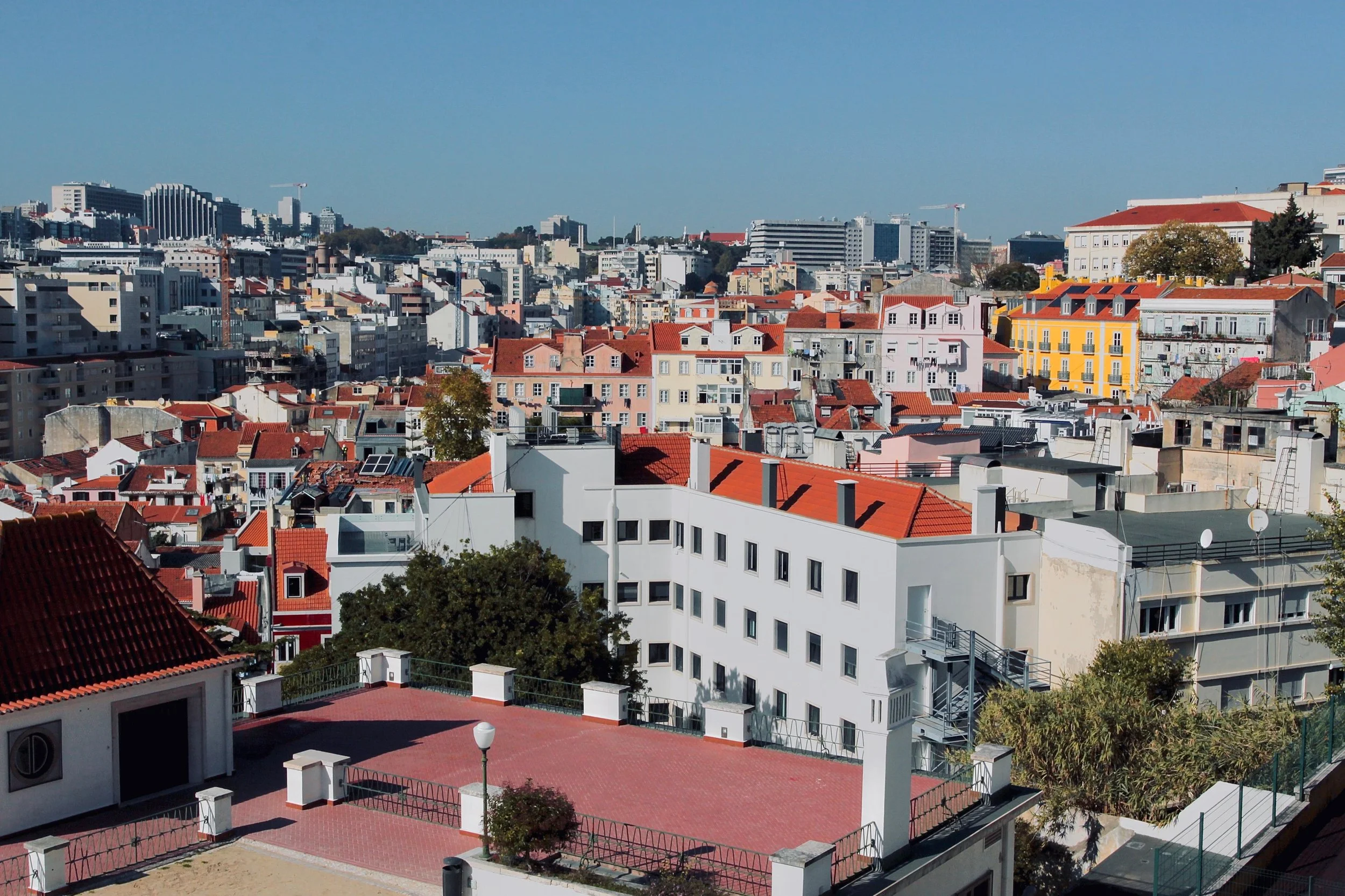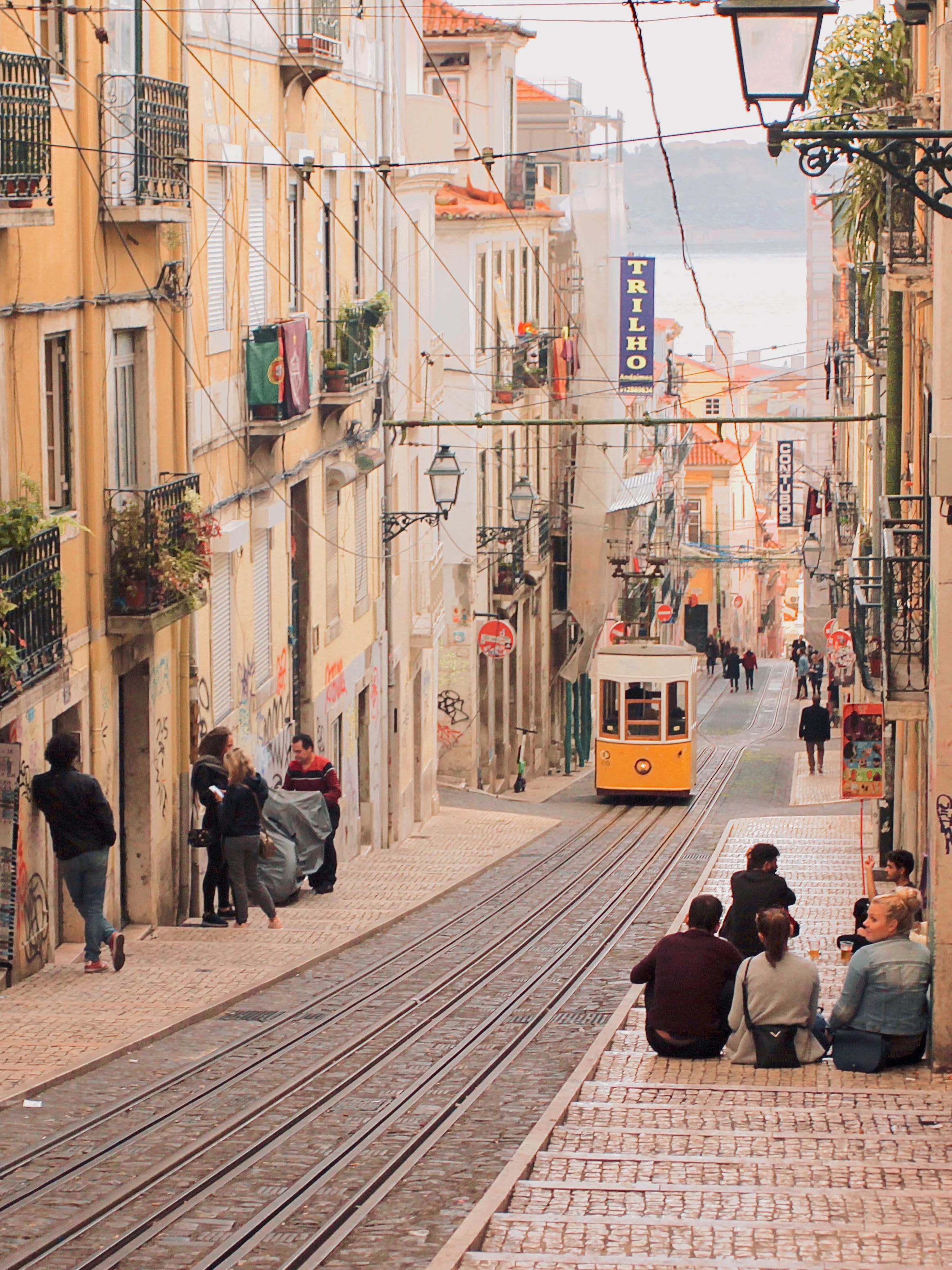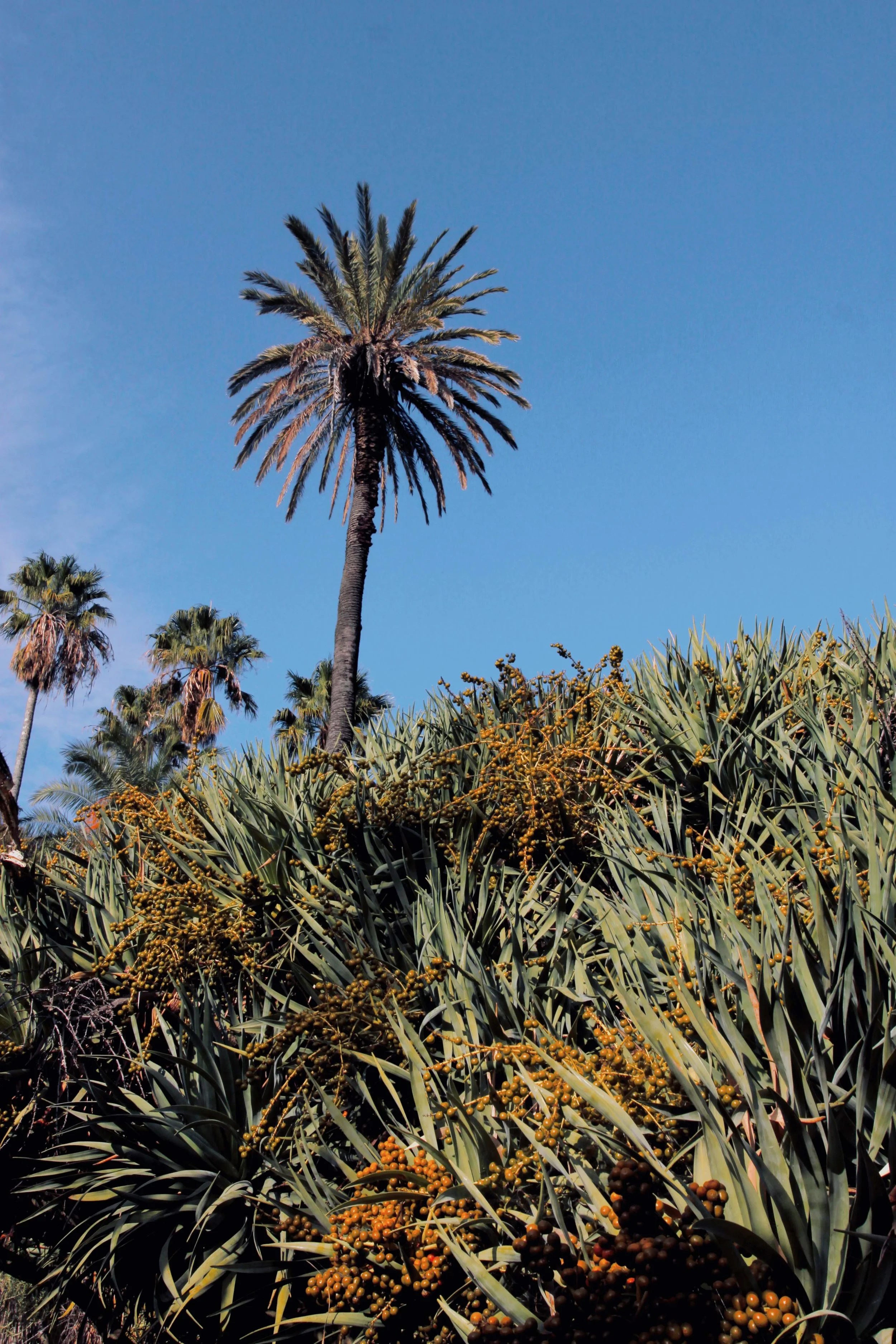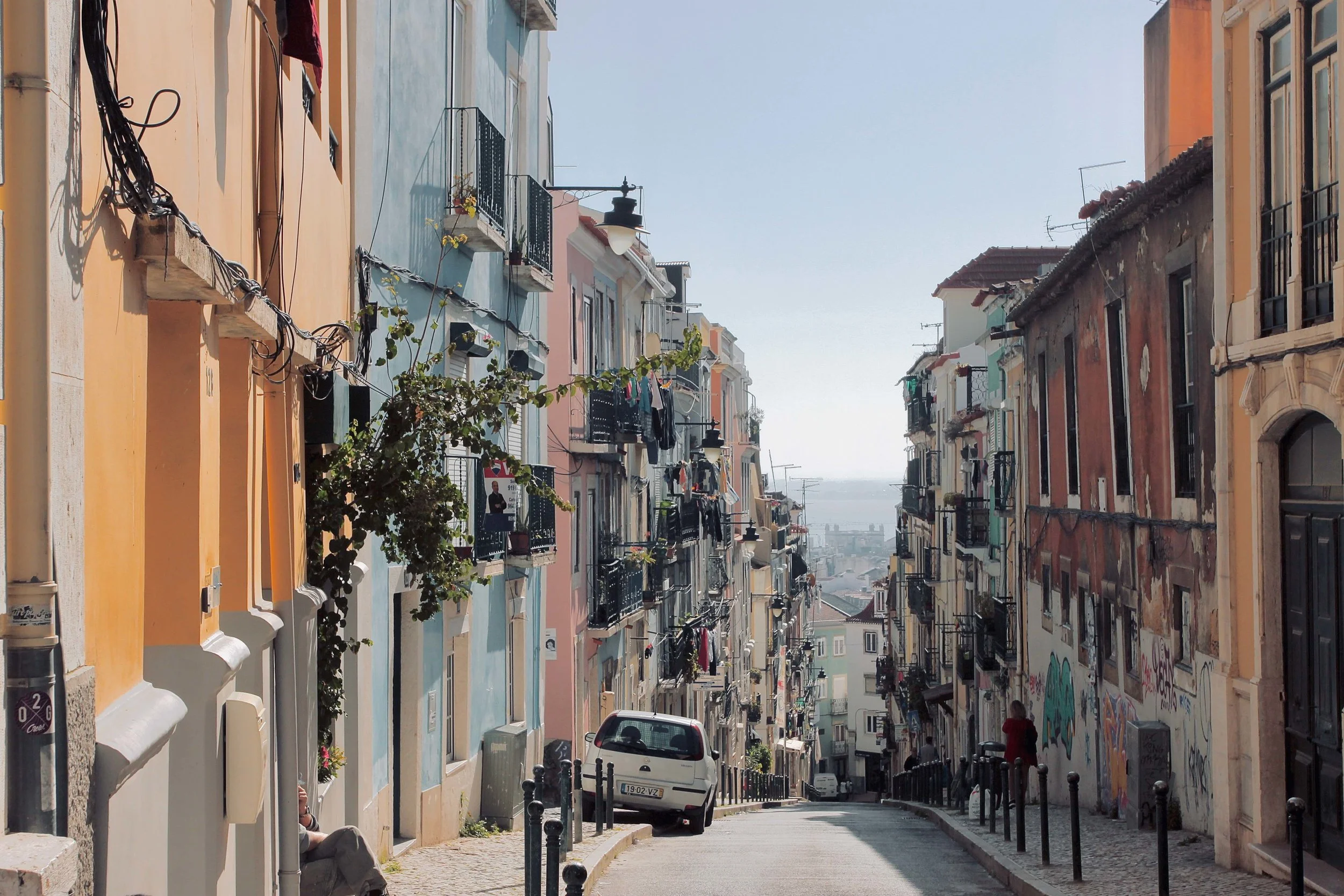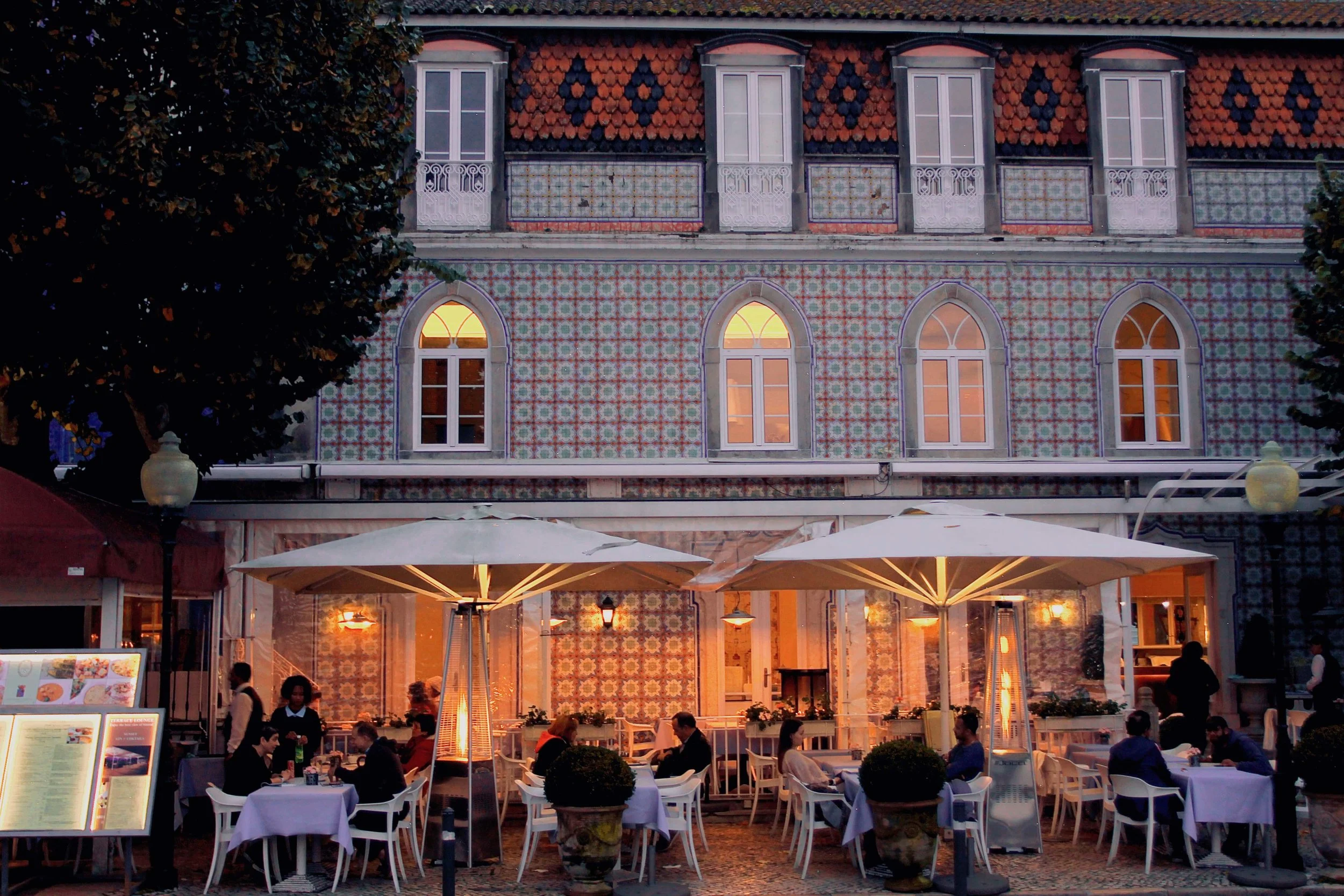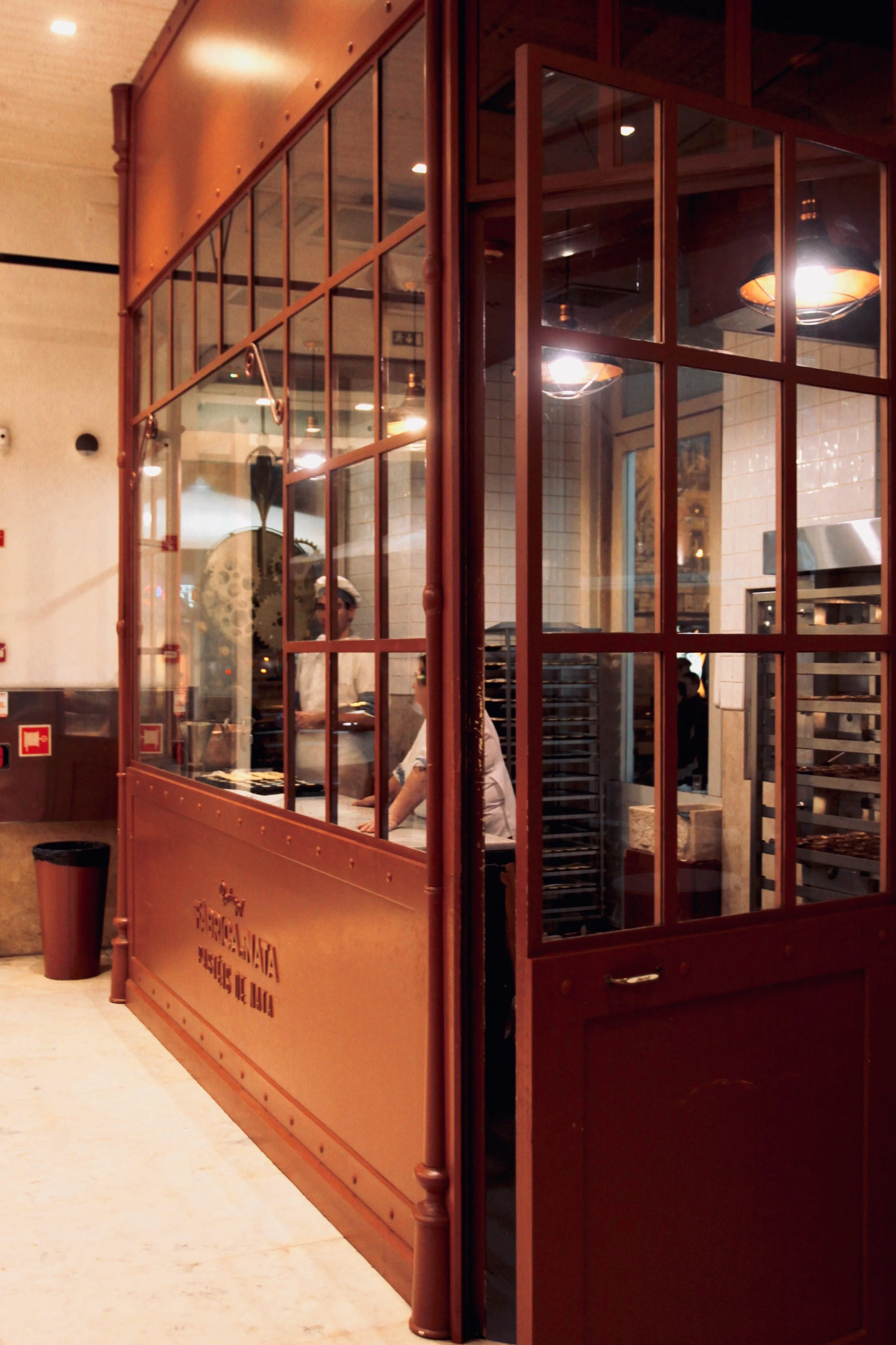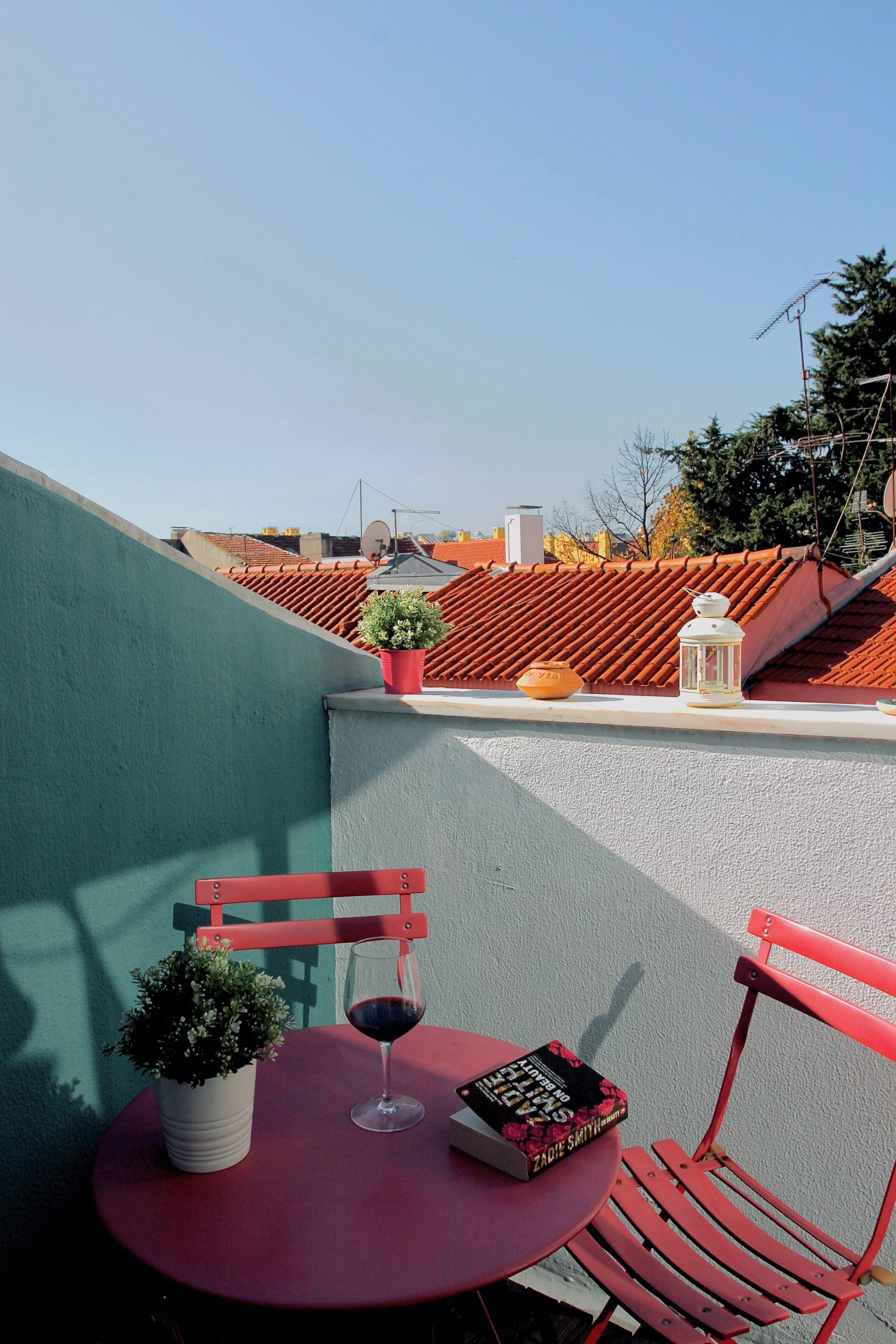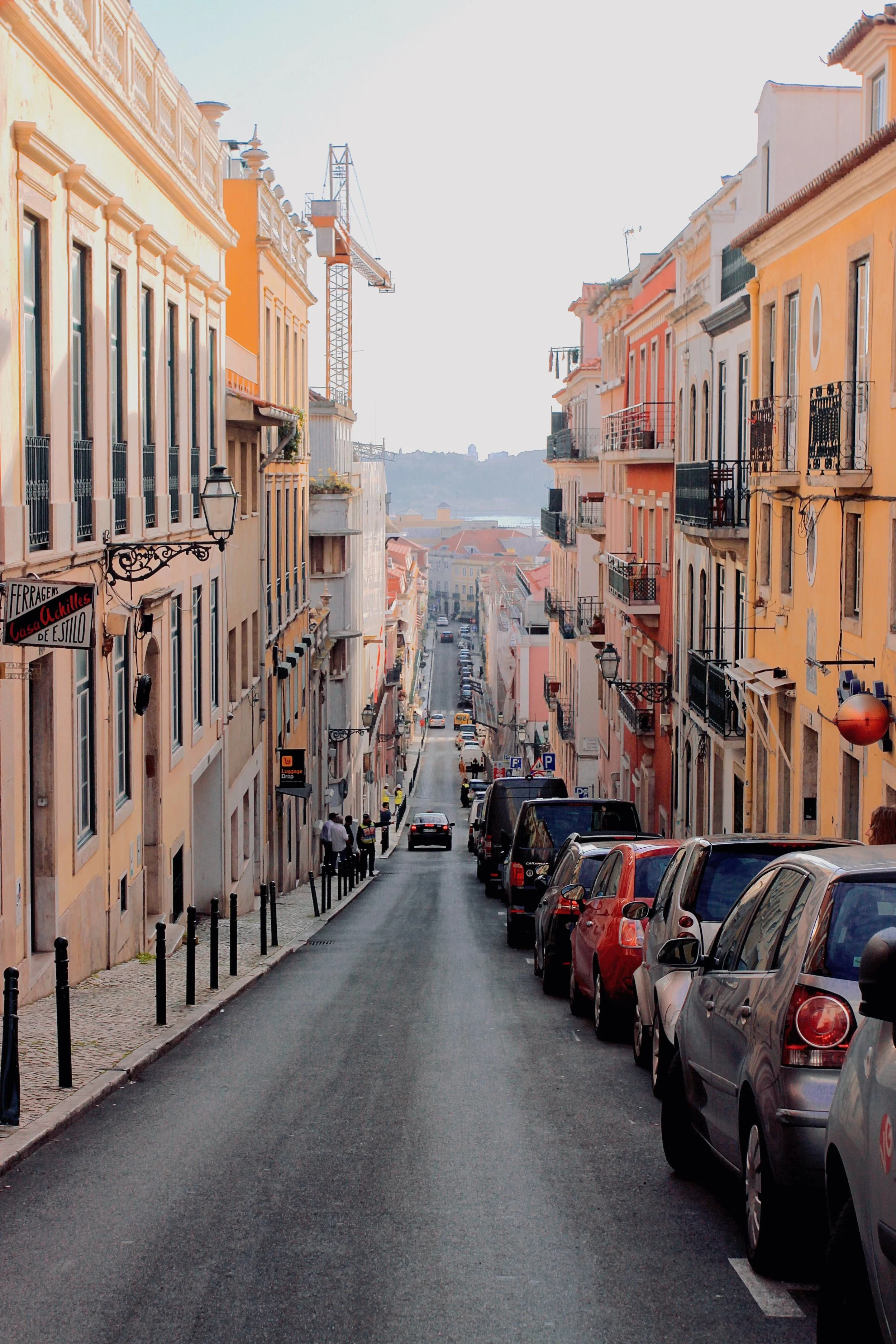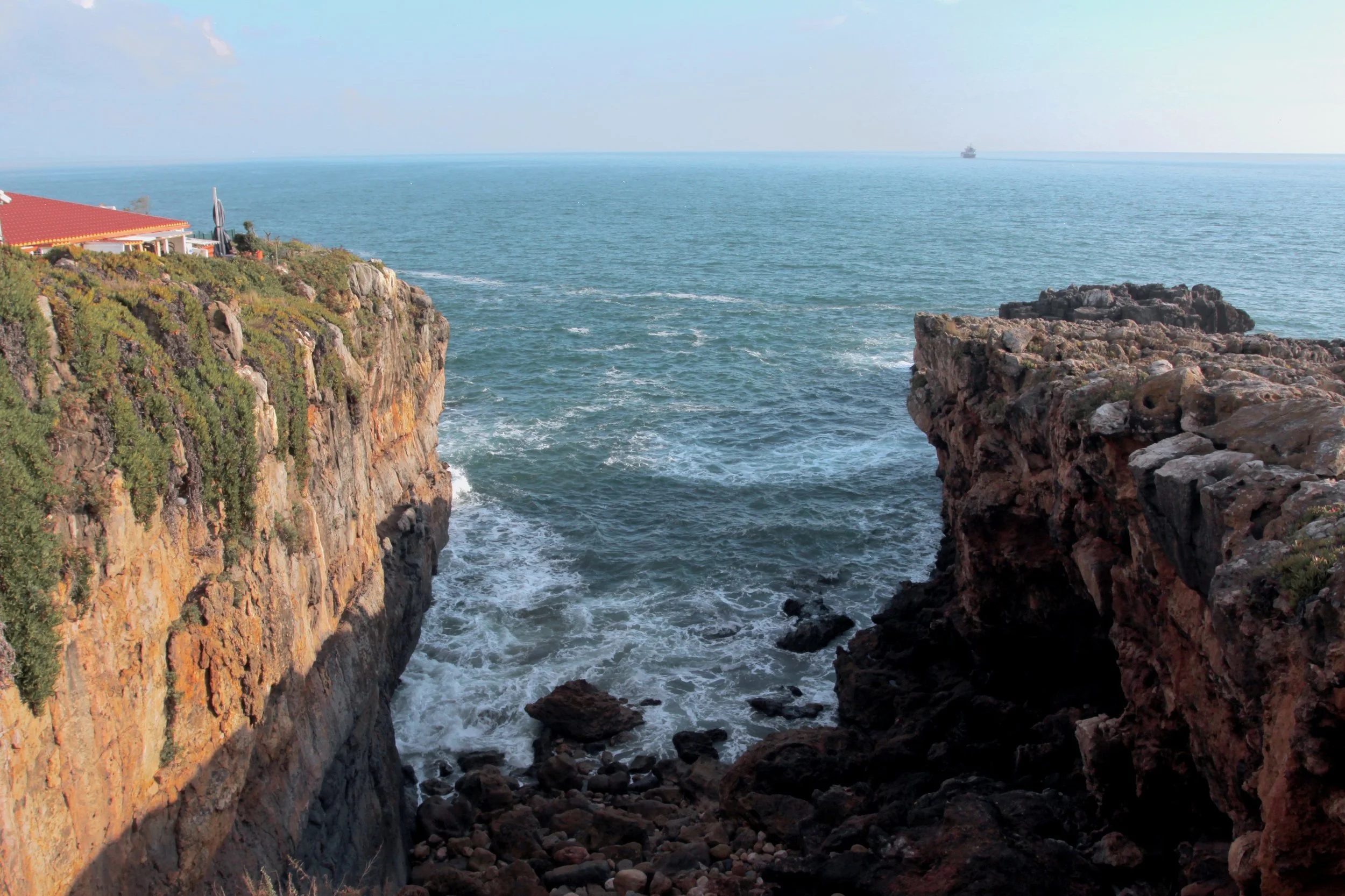7 unique experiences over 2 days in Lisbon
home / europe / back to portugal
We fell in love with Lisbon as soon as we arrived. Although has the hallmarks of a big city — busy streets, lively crowds, and an expansive skyline — we were struck by its charm and the homage to tradition at every turn. This post includes unique experiences that you can expect from even a short visit to Lisbon, including hidden gems in its pastel streets, tricks to finding the birthplace of the Portugese tart, and a route along its dramatic coastline to hell’s mouth.
/ DAY ONE
AROUND THE CITY
1. Find the best, secret view of Lisbon from Jardim do Torel
Lisbon was built over seven very steep hills which provide impressive vantage points around the city. While there are many popular miradors, Jardim do Torel is one of the best kept secrets. It is frequented by locals as a beautiful place to read beside the cityscape, and — away from the crowds and tourists prices of other miradors — the park is extremely peaceful. Definitely don’t miss this spot if you’re visiting in August, as the 18th century fountain in its centre is transformed into a grand swimming pool. Most importantly, the mirador at Jardim do Torel overlooks a stunning skyline of Portuguese architecture, with a mixture of both the modern city and historical Pombaline houses.
“What now? We bury the dead and heal the living.”
In 1755, Lisbon was destroyed by a magnitude 9 earthquake and the tsunami and fires that followed — the catastrophe known as ‘the Great Lisbon earthquake’. In the process of rebuilding the city, a group of architects commissioned by the Marquis of Pombal designed the world’s first earthquake-resistant buildings, testing their models with troops stomping the ground to simulate seismic activity. The resulting architecture in Pombaline Downtown has been preserved, filling Lisbon’s skyline with pastel, narrow buildings.
2. Follow the Bica Funicular, an alternative to Tram 28
Tram 28 is without a doubt one of the most famous sites in Lisbon, and many travel guides list riding the tram as a popular attraction. However, if you’re looking for Tram 28, you may also find long queues and graffiti on its sides. Especially if you don’t have much time in Lisbon, we’d recommend heading to a guaranteed, scenic view of the Elevador da Bica instead (click to open in maps). While the route of tram 28 runs through the city streets, at the Bica Fernicular you’ll find a bright yellow tram sitting on a steep hill, offering an unparalleled view of Lisbon and the water behind it.
3. Pass through Lisbon’s Jardim Botânico
As they are nearly invisible from the main streets, the botanical gardens of Lisbon are an undeservedly overlooked part of the city. The gardens contain one of Europe’s largest collections of subtropical plants, spanning 10 acres and housing 18,000 species from around the world. Here, you can find rows of cacti, prehistoric plants, tranquil ponds and bamboo groves.
TICKETS
The Jardim Botânico (click to open in maps) has a small entrance fee of 3 euros ($5 AUD) per person.
4. Explore the streets of Bairro Alto and ruins of Carmo Convent
The sites listed above bring you into Bairro Alto, which is a beautiful experience in itself. This is the bohemian district of Lisbon — a colourful and quaint area filled with trendy cafes and restaurants. For some history, visit the Largo do Carmo (click to open maps), a beautiful gothic church built in 1389. This church was ruined in the Great Lisbon earthquake and never rebuilt, but its ethereal skeleton remains. It has since been converted into a museum dedicated to the event, and contains tombs, mosaics, shrunken heads, mummies, and Visigothic artefacts.
Colourful streets of Bairro Alto
5. Eat traditional Portuguese food
Restaurant in Sintra, Portugal
Portugal can be experienced through a smorgasbord of seafood, sweets and meats at surprisingly affordable prices. Although Pinóquio has become quite popular among visitors to Lisbon, we’re including it on the list as it remains a favourite among locals and was highly recommended to us for traditional Portuguese dishes. Under green and white umbrellas, the restaurant specialises in seafood and also has an amazing grill for meats. Most highly rated is a steak dish, pica pau — its name translating to ‘woodpecker’ to reflect the way in which it is eaten.
Portuguese cuisine favours those with a huge sweet tooth. Just some of the national desserts include: Madeira honey cake, Angel’s double chin, ovos moles (the first pastry to receive protected status from the European Commission), Sintra’s pillows, custard tarts, bean pastry, bacon pudding, sericaia, and tortas of Azeitão. For a short history of these sweets and details about where to find them in Lisbon, check out the beautifully illustrated Eater Guide to Lisbon. For delicious custard tarts in Lisbon, we’d recommend heading to Fábrica da Nata (click to open in maps). Here you can buy freshly baked Pastéis de Nata for 1 euro each ($1.5 AUD), or together with a glass of port wine for just 2.20 euros ($3.5 AUD). For those interested in the famous Pastéis de Belém, we’ve included a trick to experiencing them below.
/ DAY TWO
TAKE THE SCENIC, DELICIOUS ROUTE FROM LISBON TO SINTRA
The charming old town and palaces of Sintra make it one of the most popular day trips out of Lisbon. If you only have time for one day trip and would like visit, we’d make just one recommendation — take the path less travelled along the sea to get there. The most common route from Lisbon to Sintra is by train from either Rossio Station (40 minutes) or Oriente Station (50 minutes). If you’re short on time, these trains are a good, quick option. Instead, we took the train from Lisbon’s Cais do Sodré station (click to open in maps) to Cascais. Along this route, you’ll enjoy an expansive, uninterrupted view of the ocean, and will be able to stop at two beautiful places along the way: Belém and Cascais.
6. Follow the sea from Cascais TO HELL’S MOUTH
Even if you aren’t able to visit the Algarve on this trip to Portugal, the country’s stunning coastline can still be experienced right outside of Lisbon. Cascais is a quaint fishing town, where you can walk through cobble-stoned streets, pick up extremely fresh seafood, and head to the coast along one of the many sandy beaches. Boca do Inferno — which literally translates into ‘hell’s mouth’ — is a dramatic chasm near Cascais. Here, the Atlantic Ocean has carved into the cliffs, collapsing a cave and forming a natural rock arch, high above the waves. There is a path to a terrace which will give you a view of the ocean against the cliff. Alternatively, we climbed over the rocks and were able to see the entire cavern from the other side.
View over Boca do Inferno
HOW TO GET from Lisbon to BOCA DO INFERNO
Cascais can be reached in 30 minutes drive from Lisbon. Trains also run very frequently between the two cities (departing every 20 minutes during the day), and take around 30 minutes. Visiting Boca do Inferno is an unforgettable experience, and it can easily be reached in around 25 minutes walk or a 5 - 10 minute drive from the main town of Cascais.
How to get From Cascais To Sintra
From Cascais, Sintra can then be reached in around 30 minutes’ drive. We took a taxi which cost 20 euros at the time ($30 AUD). There are also two buses running from Cascais to Sintra: the 417, which takes around 30 minutes, and the 403, which takes one hour and passes the dramatic Cabo da Roca cliffs. More information on bus timetables and tickets can be found on the Scotturb website here.
7. Skip the line for Pastéis de Belém
Some like their eggs scrambled, others sunny side up — we like them in tarts. Delicious Portuguese tarts can be found all over the country, with each bakery offering its own unique spin. However, the world’s best are found only in Belém, an enchanting district of Lisbon by the seaside.
While the average Portuguese tart is called a Pastéis de Nata, the locals call the best the Pastéis de Belém, and that name is trademarked. Other Portuguese tarts, anywhere in the world, are imitations of an original recipe created here in the early 1800s. Back then, monks at a nearby monastery starched their clothing with egg whites and used the leftover yolk to make pastries. The monastery closed following a liberal revolution, and some monks who remained in the city established their own bakery, Pastéis de Belém, in 1837. The original recipe is known to only six people in the world: three shop-owners and three chefs who have worked in an isolated back room of Pastéis de Belém for over 40 years. The bakery has been owned by four generations of the same family, and now makes over 20,000 pastries each day.
There are always long queues of people buying tarts to take away — in peak seasons, the wait time can reach up to three hours. However, you can skip the line and walk straight in; it looks small from the outside, but there are 400 tables through the corridors, including two enormous rooms similar to German beer halls. Not only is this a faster way to sink your teeth into these delicious tarts, they’ll also be warm and fresh out of the oven, ready to be doused in cinnamon and icing sugar.
Pastéis de Belém (click to open in maps) is open every day from 8.00am - 11.00pm.
How to get from Lisbon to Belém
Belém itself is filled with history and culture, and the countless monuments, museums and gardens, make losing track of time dangerously easy. Belém can be reached in just 15 minutes’ drive from central Lisbon. It is also accessible by public transport: trams 15 and 15E depart from Praça da Figueira (click to open maps) and take roughly 25 minutes; trains take 7 minutes from Cais do Sodré station (click to open maps); and Belém is also a stop on many hop-on hop-off buses in the city.
Where to stay in Lisbon
We’d recommend staying in Bairro Alto itself, as there are many options for accommodation within walking distance of metro stations, restaurants, and many of the attractions around Lisbon. There are over one hundred hotels listed in this area on Booking.com (almost half are under $77 AUD per night), and many hostels ranging from $15 - 100 AUD per night on Hostel World.
If you want something a bit more homey, there are hundreds of places listed on Airbnb in Bairro Alto, with an average nightly price of around $100 AUD (varying depending on the type of accommodation, with hundreds listed for under $100 a night too). We stayed in this apartment (pictured), which was beautifully decorated and very spacious (including a kitchen, dining room, office, living room and laundry). The apartment sits on the top floor of a traditional Pombaline style building from 1805, and has a cute pastel terrace overlooking the rooftops of Lisbon. The hosts gave us one of the warmest welcomes we’ve ever had (and trust us, we’ve had so many now), as well as a wealth of information about visiting Lisbon.
The Best time to visit Portugal
Steep hills of Lisbon
Portugal can be visited pretty much all year round as it has a temperate climate. However, the crowds reach their peak in summer (June - August), getting particularly busy along the beaches and at the Algarve. Spring (March - May) and autumn (September - October) are ideal times, as the weather is warm and the prices of accommodation are generally lower across the country than in the peak summer season. The rainy season technically begins in November and December, however Portugal still gets more sun and warmer temperatures than most other areas in Europe — we visited in November and it was still a clear, sunny 17 degrees Celsius.
How long to spend in Lisbon, Portugal
At the start of our trip, we’d hoped to spend weeks exploring Portugal. Unfortunately, our plans changed along the way, and we ended up having only three nights in Lisbon before flying out. It is such a beautiful, underrated city, and we wish we had more time there. However, if you are planning a short trip, rest assured that two full days in the city is still enough time to visit many of its highlights. We hope the photo journal will help make the most of a short trip, and give an idea of the unique experiences that you can expect from this stunning corner of the world.
home / travel / back to europe
Find us on Instagram




